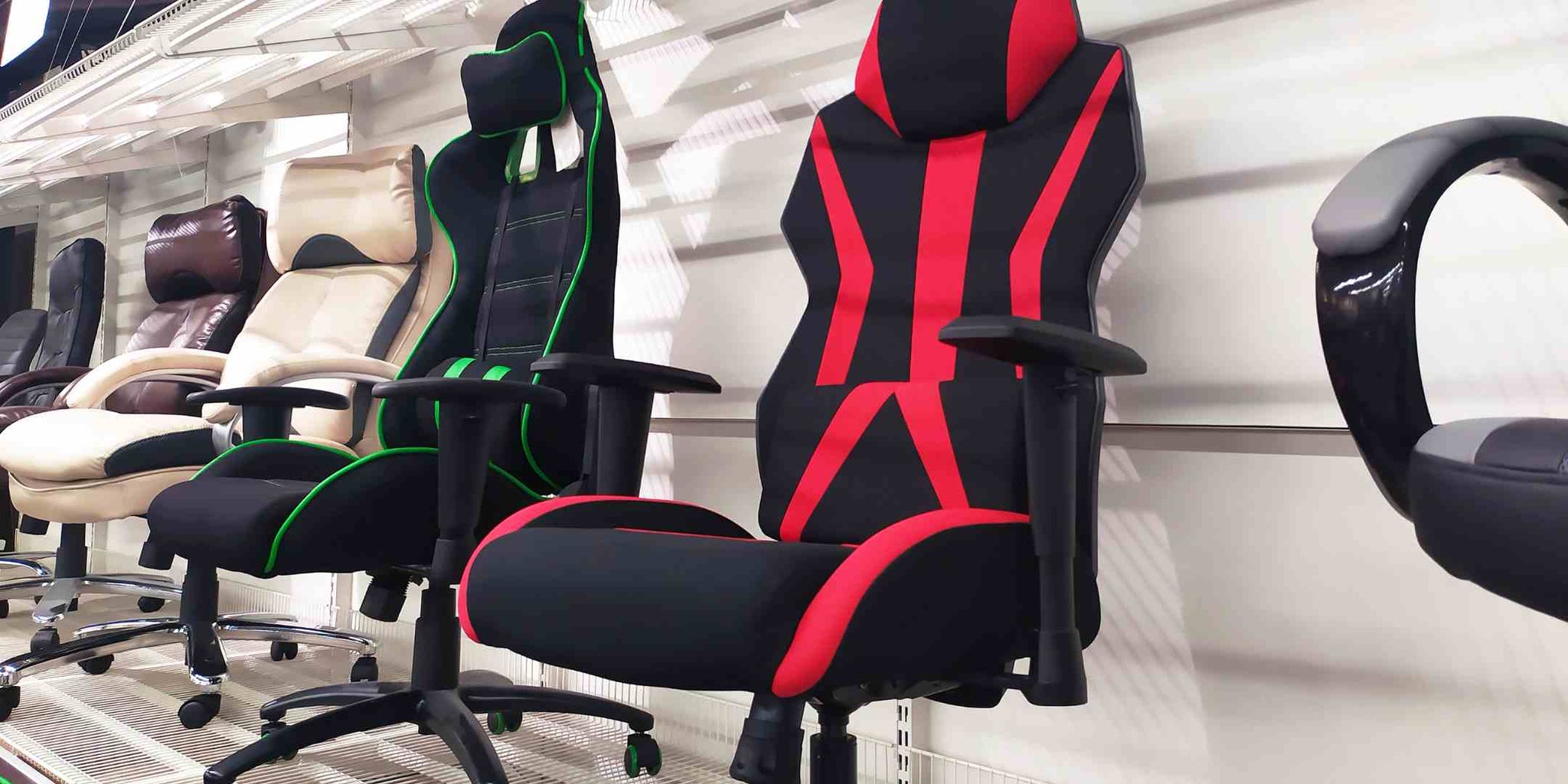Our reliance on computers and technology has never been greater in this fast-paced digital age. Whether working from home, in an office or pursuing your passions online, your computer desk is likely your primary workspace. But what if your workspace could be more than just functional? What if it could be comfortable, healthy, and designed with you in mind?
That's where ergonomic computer tables come into play. They're more than just pieces of furniture; they're meticulously designed to enhance your well-being, boost your productivity, and elevate your overall computer experience. In this article, we'll dive deep into ergonomic computer tables, exploring their innovative design features, their myriad benefits, and how they can transform your daily work or gaming routine.
What is Ergonomic Design, and How Does it Apply to Computer Tables?

Ergonomic design is a multidisciplinary approach focused on creating products, environments, and systems that consider the well-being and efficiency of the individuals using them. The primary goal of ergonomic design is to optimise the interaction between people and their surroundings, making tasks more comfortable, safe, and productive while minimising the risk of discomfort, strain, and injury.
When it comes to computer tables, ergonomic design principles are applied to ensure that the table's design and layout contribute to the user's overall well-being.
Here's how ergonomic design applies to computer tables:
Adjustability
Ergonomic computer tables are designed with adjustable features that allow users to customise their computer equipment's height, angle, and placement, accommodating users of different heights and preferences and reducing the risk of poor posture and discomfort.
Monitor Placement
Ergonomic tables are designed to position the computer monitor at eye level, reducing strain on the neck and upper back, which promotes a more comfortable and healthy viewing angle.
Keyboard and Mouse Placement
Ergonomic tables ensure that the keyboard and mouse are at a comfortable height and angle that minimises strain on the wrists and arms and promotes a natural hand position.
Cable Management
Organised cable management systems are integrated into the design of ergonomic computer tables that reduce clutter and tripping hazards, creating a safer and more efficient workspace.
Storage and Organisation
Ergonomic tables often include features for efficient storage and organisation of computer peripherals and supplies that help keep the workspace tidy and minimise distractions.
Health Benefits
Ergonomic design helps reduce the risk of musculoskeletal disorders, such as back pain, carpal tunnel syndrome, and eyestrain, that promote the long-term health and comfort of the user.
Benefits of Ergonomics with Health and Productivity of Computer Users

Reduces Physical Discomfort and Pain
Proper ergonomics minimises physical discomfort and pain, such as backaches, neck strain, and repetitive strain injuries (RSIs) like carpal tunnel syndrome, which leads to improved physical well-being and a reduced risk of work-related injuries.
Promotes Good Posture
Ergonomic design encourages users to maintain good posture, which reduces the stress on the musculoskeletal system, preventing conditions like slouching, which can cause long-term health issues.
Enhances Comfort
Ergonomically designed chairs, desks, and accessories provide comfort during prolonged computer use, increasing user satisfaction and reducing the likelihood of discomfort or fatigue.
Minimises Eye-Strain
Properly positioned monitors, adequate lighting, and screen glare reduction help prevent eye strain and discomfort, improving visual health.
Boosts Productivity
Ergonomic workstations are tailored to users' needs and preferences, reducing distractions, discomfort, and the need for frequent breaks, resulting in increased productivity and efficiency.
Prevents Work-Related Injuries
Ergonomic design minimises the risk of work-related injuries and conditions, such as musculoskeletal disorders and vision problems, which can result in decreased absenteeism and medical costs.
What to Consider When Purchasing Ergonomic Computer Tables

- Check the table is height-adjustable and look for a wide height range to accommodate different user preferences.
- Consider the table's size and shape and ensure it provides enough workspace for your computer equipment and tasks while fitting within your available space.
- Determine the maximum weight capacity of the table. Ensure it can support your computer equipment, monitors, and accessories without strain.
- Some tables have built-in ergonomic accessories like monitor arms, keyboard trays, and cable management systems. Assess whether these accessories are included or if they can be added to your setup.
- Evaluate the quality of materials used in the table's construction. Look for sturdy materials that can withstand daily use.
- Consider the table's design and how it fits into your workspace. Ergonomic tables come in various styles, so choose one that complements your office or home decor.
- Ensure the table has a cable management system to keep wires organised and prevent clutter.
- Look for tables with a stable and sturdy base to prevent wobbling or tipping, especially when the table is adjusted to different heights.
- Check if the table requires assembly and if the process is straightforward or might require professional assistance.
- Ensure that the table can accommodate your specific computer equipment, including the size of your monitor and other peripherals.
FAQS
What is an ergonomic computer table, and how is it different from a regular computer desk?
An ergonomic computer table is designed to promote user comfort, health, and productivity by offering features like adjustable height, monitor placement, and keyboard ergonomics. It differs from a regular desk in its focus on optimising the workspace for the user's well-being.
Why is an ergonomic computer table important?
Ergonomic computer tables are important because they help reduce the risk of physical discomfort and strain associated with prolonged computer use. They also promote good posture, which is crucial for long-term health and productivity.
Are ergonomic computer tables expensive?
The price of ergonomic computer tables varies depending on the brand, features, and materials used. While some can be more expensive than traditional desks, the long-term health and productivity benefits often make them a worthwhile investment.
How do I know which size and shape of the ergonomic table is right for my workspace?
Measure your available space and consider the size and shape best fits your needs. L-shaped, corner and compact options are available, so choose one that complements your workspace.
Can I use an ergonomic table for gaming?
Yes, many gamers prefer ergonomic computer tables because of their adjustable features and comfort. These tables can enhance the gaming experience and reduce the risk of discomfort during extended gaming sessions.
Takeaway
Regarding modern work and leisure, the ergonomic computer table emerges as a silent champion, subtly influencing our health and productivity. These purposefully designed workstations reshape the physical landscape of our daily computing and the way we interact with technology. The key takeaway is that investing in an ergonomic computer table is not just about acquiring furniture; it's about investing in your well-being and efficiency. By prioritising good posture, comfort, and adaptability, these tables foster a healthier and more productive computer experience, ultimately allowing us to work smarter, game longer, and enhance our quality of life in a world increasingly driven by screens.








